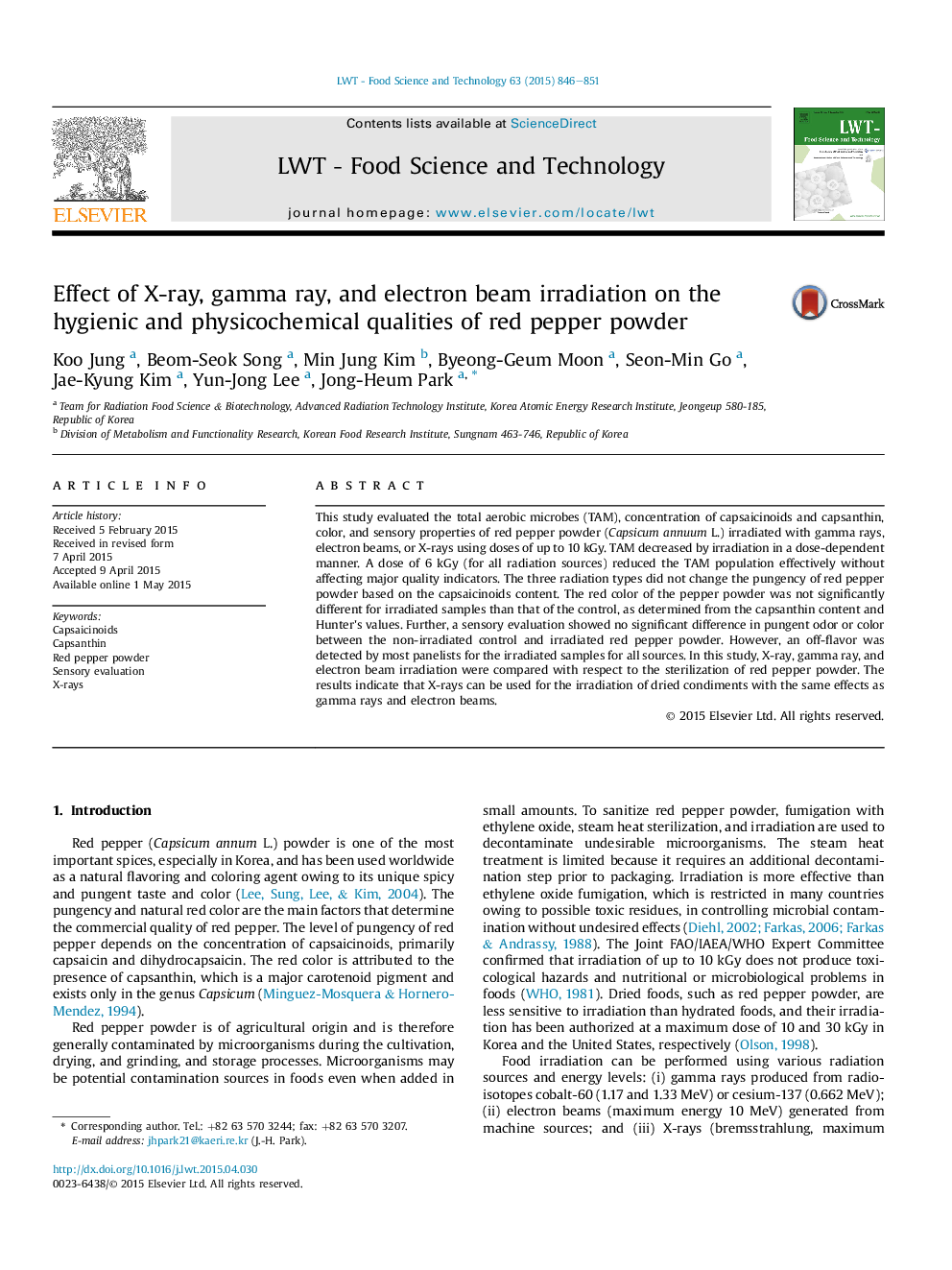| Article ID | Journal | Published Year | Pages | File Type |
|---|---|---|---|---|
| 6400398 | LWT - Food Science and Technology | 2015 | 6 Pages |
â¢TAM in red pepper powder decreased by irradiation in a dose-dependent manner.â¢The D10 values for TAM differed significantly among the tested radiation sources.â¢The three radiation types did not change the concentration of capsaicinoids.â¢Red color of the pepper powder was not significantly different for irradiated samples.â¢Off-flavor was detected by panelists for samples irradiated at 10 kGy for all sources.
This study evaluated the total aerobic microbes (TAM), concentration of capsaicinoids and capsanthin, color, and sensory properties of red pepper powder (Capsicum annuum L.) irradiated with gamma rays, electron beams, or X-rays using doses of up to 10Â kGy. TAM decreased by irradiation in a dose-dependent manner. A dose of 6Â kGy (for all radiation sources) reduced the TAM population effectively without affecting major quality indicators. The three radiation types did not change the pungency of red pepper powder based on the capsaicinoids content. The red color of the pepper powder was not significantly different for irradiated samples than that of the control, as determined from the capsanthin content and Hunter's values. Further, a sensory evaluation showed no significant difference in pungent odor or color between the non-irradiated control and irradiated red pepper powder. However, an off-flavor was detected by most panelists for the irradiated samples for all sources. In this study, X-ray, gamma ray, and electron beam irradiation were compared with respect to the sterilization of red pepper powder. The results indicate that X-rays can be used for the irradiation of dried condiments with the same effects as gamma rays and electron beams.
